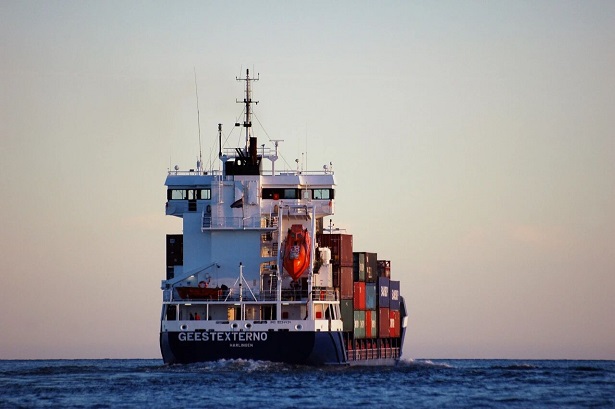Sea Feight Signficant Increase In Many Parts of The World
Views : 1066
Author : Bozhou Marine
Update time : 2020-11-23 14:47:36
In recent months, due to the uneven global economic recovery, the sharp rebound of epidemics in many parts of the world, and the arrival of traditional transportation seasons such as Christmas and New Year, congestion has occurred in many European and American ports, but many domestic ports are extremely short of containers. Under such circumstances, many large shipping companies have begun to levy additional charges such as congestion surcharges, peak season surcharges, and shortage of containers.
United States: Ports of Long Beach and Los Angeles have collapsed
The Port of Long Beach and the Port of Los Angeles are the two busiest ports in the United States. The throughput of these two major ports in October
The year-on-year growth reached double digits, both setting historical records. It is reported that the container throughput of Long Beach Port in October was 806,603 TEUs, a year-on-year increase of 17.2%, breaking the historical record set a month ago.
The California Trucking Association (CTA) and the U.S. Port Trucking Association (HTA) stated that in the ports of Los Angeles and Long Beach alone, 10,000 to 15,000 containers were stranded at the terminals, causing cargo transportation in these two major ports to "nearly paralyze." "; West Coast ports and Chicago are also at a loss for the large number of empty containers brought about by the surge in imports.
With the continued popularity of China-US routes, strong growth in cargo volume, influx of large quantities of cargo, and continuous rebound in cargo volume, the Port of Los Angeles in the United States is experiencing unprecedented busyness and congestion.
Gene Seroka, executive director of the Port of Los Angeles, said that the current Los Angeles port yard is full of containers filled with cargo, and port workers are working overtime to handle the containers. In order to reduce the spread of the virus, the port has temporarily reduced the number of dockers and port personnel by about one-third, which is difficult to supplement in time, which means that the loading and unloading of ships will be greatly affected.
At the same time, there is a general shortage of equipment in ports, extended loading and unloading time, coupled with the serious container imbalance in Pacific trade, causing a large number of imported containers to be backlogged in US ports, terminal congestion, and container turnover, which hinders cargo transportation.
UK: Containers flooded to villages
It is reported that the flood of containers in the UK has spread from the country’s ports and distribution centers to towns and villages. At present, the port of Felixstowe, the largest container port in the UK, is in serious congestion, with a large number of containers piled up, and the port once refused to arrive at the port with empty containers.
It is reported that the congestion has not been alleviated, and the troubled port has to refuse to accept empty containers again to continue to clear the congestion and backlog.
Mediterranean Shipping expects that the congestion in British ports will continue into the New Year, so it announced that it will charge a congestion fee of US$50-175/TEU for all imported containers.
The goods from the countries of origin in the Far East shall be levied from December 1st;
Imported goods from other regions will be levied on November 16;
From December 10, congestion will be imposed on all types of containers imported from the UK.
Mediterranean Shipping said: “During this period of very high imports, many British ports are facing the challenge of berthing delays and increased stay time.” Industry insiders predict that container congestion in British ports will continue until early 2021.
MSC has announced that due to continued congestion in British ports, the company will impose a congestion charge on all imported containers, ranging from 50-175 US dollars/TEU.
Goods imported from the Far East will be collected from December 1st;
Goods imported from the United States will be levied on December 10;
From November 16th, a congestion charge will be imposed on imported goods from other regions.
Argentina: Workers' strike ends
According to reports, the Argentine port union stated on November 9 that the Argentine grain port workers had launched a surprise strike due to unsuccessful wage negotiations and other factors. Some major terminals in the Port of Subablanca caused blows, causing port congestion and affecting product exports.
Juan Carlos Peralta, spokesperson of the URGARA union, said that this is a strike in one of the wealthiest port areas in Argentina and they will take necessary measures to stop it. Avoid as much as possible to reduce port cargo congestion.
At the time of the conflict, the major oil feederations of the Grain Export Center had separately threatened to take strike action on pandemic payments, and are currently under the mediation of the government to maintain the normal operation of the port. The port workers ended their strike on November 20.
New Zealand: added by many shipping companies
Due to severe congestion in New Zealand's main ports, Maersk and CMA CGM plan to impose a port congestion surcharge at the Port of Auckland.
Previously, the shipping company MSC also announced that the Port of Oakland would impose a congestion surcharge. Starting from the date of the bill of lading on November 9, 2020, all export goods shipped from inland China/Hong Kong/Taiwan, South Korea, Japan and Southeast Asia to the Port of Oakland will be levied 300 US dollars/ Congestion surcharge for TEU.
CMA CGM has announced that all containers arriving/departing from Auckland (including standard containers and refrigerated containers) will be charged a port congestion surcharge of US$200/TEU. The application date is as follows:
Non US Trades:
Export cargo of all ships leaving Auckland on and after November 17;
Goods imported into Auckland by vessels departing Hong Kong on or after November 17;
US Trades:
Export cargo of all ships leaving Auckland on and after December 3;
Goods imported to Auckland from ships received at the port of departure on and after December 3
The French shipping company has notified its customers that payment will be collected by cash on delivery, and advance payment will be used when importing. In addition, Maersk will impose a port congestion surcharge of US$215/TEU (standard and refrigerated containers) on all containers entering and leaving the Port of Auckland, New Zealand, as follows:
Auckland to/from World (excluding U.S. trade)
Export cargo of all vessels leaving Auckland on and after November 13, 2020;
Imported goods departing from the place of origin on and after November 13, 2020
Auckland to/from US
Export goods received in Auckland on and after December 6, 2020;
Imported goods received in the country of origin on and after December 6, 2020
All goods loaded/unloaded at the Port of Oakland are subject to the Oakland Congestion Surcharge. This surcharge does not apply to goods received/delivered in Auckland Metropolitan Port. The Danish container company pointed out that traffic congestion at the Port of Auckland in New Zealand continues to severely affect its schedule.
“In the past few weeks, we have done our best to transport your cargo to and from Auckland, and we have also done our best to deal with the current situation.” Maersk said in the announcement: “We are experiencing ship delays. At present, the waiting time is as long as 12 days, which has caused the ship to jump from the port. The accident has seriously affected our overall operating costs.
Guinea: Port situation is getting worse
Due to the deteriorating port conditions, CMA CGM CMA CGM will charge a port emergency congestion surcharge (PCS) in Guinea.
Origin: Global
Destination: Guinea
Cargo: dry cargo, refrigerated cargo, over-gauge cargo, bulk cargo
Application date: November 10 (loading date)-Except for US origins: 5 December and Brazil origins: 5 to 31 December, extendable for one month
Amount: US$200/170/150 per unit
Payment: Prepaid-except ocean freight
According to industry insiders, the current port congestion situation in Guinea is not optimistic, and congestion may continue for a long time in the future.
Spain: additional congestion surcharge
Due to the impact of congestion at the Port of Bilbao in Spain on operations, the Mediterranean Shipping Company (MSC) will charge a congestion surcharge (CGS) for cargo to and from Bilbao.
Since the bill of lading (B/L) takes effect on November 16, a surcharge of 100/US$125/TEU will be imposed on all goods entering and leaving Bilbao, except for goods to and from the United States. The execution date of the bill of lading will be from December 5th. Levied.
MSC stated in its announcement that the implementation of this surcharge is to "maintain the service at the required level" and to continue to monitor the situation in Bilbao and update the fee accordingly.
Analysis and forecast
Currently, there are signs of a second outbreak in Europe and America. Therefore, China, which is the first to recover, has a large number of industrial products shipped out, but not many return industrial products, which has caused the uneven flow of containers around the world.
“It’s not a shortage of boxes at the moment, it’s just an imbalance.” Lin Shulai explained that global container shipping was originally a cycle. For example, from China to Singapore, Europe, the Middle East, and back to China, different cargoes are constantly being transshipped.
However, the outbreak of the epidemic disrupted this "closed loop". "Europe and the United States import a lot of goods from China, but due to the impact of the epidemic, the shortage of manpower and supporting facilities makes it impossible to get out of empty boxes." Lin Shulai said that this is why the domestic market There has been a situation of "hard to find a box". In fact, this situation has already appeared since May and June this year.
According to industry analysts, at present, most of the freight from the United States to Asia is only 400 to 500 US dollars per large container (40TEU), while the freight from Asia to the West of the United States is more than 3800 US dollars per large box, and the freight to the East of the United States exceeds 4600. Dollar. Therefore, in order to transport the empty containers arriving in European and American ports back to Asia for export shipments as soon as possible, shipping companies have tried not to take back the goods on the way.
"Finally, the cost of freight will still be passed on to downstream consumers and will not have an impact on my country's foreign trade exports." Lin Shulai said that this phenomenon is precisely because my country's economy is recovering, and European and American countries concentrate on China's procurement needs. For our country, foreign trade companies may face insufficient capacity in a short period of time, but exports will remain strong for a period of time.
Zhejiang Bozhou Marine would like to remind foreign traders who have shipped recently to pay attention to the latest port information to avoid unnecessary losses.
 China's Import and Export Data
China's Import and Export Data
 Latest Progress of China-Europe Freight Trains
Latest Progress of China-Europe Freight Trains
 2025 Chinese military parade
2025 Chinese military parade